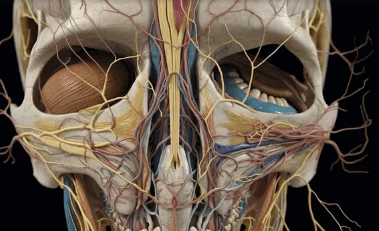Concept Map: Cranial Nerves

The exploration of Concept Map: Cranial Nerves through a concept map offers an insightful framework for understanding their intricate roles in sensory and motor functions. By categorizing and visualizing the twelve paired nerves, one can appreciate the interconnectedness of neuroanatomy and its clinical implications. This approach not only aids students and practitioners in grasping theoretical concepts but also enhances their ability to apply this knowledge in real-world scenarios. However, the question remains: how can this visual tool be optimized to improve diagnostic accuracy and patient care in neurological practice?
Overview of Concept Map: Cranial Nerves
The human nervous system is intricately designed, and its Concept Map: Cranial Nerves play a pivotal role in facilitating sensory and motor functions.
These twelve paired nerves are critical to understanding anatomy basics, as they form complex nerve pathways that connect the brain to various body regions.
Analyzing their structure and connections provides insight into the essential roles they serve in maintaining physiological balance and responsiveness.
Read More Cute:1muo0cmr4ck= Fox Clipart
Functions of Each Concept Map: Cranial Nerves
Delving into the functions of each cranial nerve reveals the diverse roles they play in sensory perception and motor control.
Each nerve exhibits specific sensory functions, such as taste and vision, alongside motor functions that facilitate movement.
Additionally, they contribute to autonomic pathways, underscoring their clinical significance in cranial anatomy and nerve pathways, essential for diagnosing neurological conditions and understanding cranial nerve implications.

Visualizing With a Concept Map
In the realm of anatomical education, concept maps serve as invaluable tools for visualizing complex relationships among cranial nerves.
By employing a conceptual framework, educators can enhance visual learning, allowing students to grasp intricate connections and functions efficiently.
These maps facilitate the organization of knowledge, making it accessible and comprehensible, ultimately fostering a deeper understanding of neuroanatomical structures and their interdependencies.
Importance in Healthcare and Education
Concept maps not only enhance visual learning in anatomical education but also play a significant role in healthcare settings.
By illustrating relationships among cranial nerves, these tools aid in developing clinical relevance for practitioners.
Implementing effective educational strategies through concept mapping fosters deeper understanding, facilitating improved patient assessment and treatment planning, ultimately bridging the gap between theory and practical application in both education and clinical practice.
Read More Cute:1lfn0sscadu= Real:1lfn0sscadu= Alligator
Conclusion
In summary, the concept map of Concept Map: Cranial Nerves serves as a vital tool in understanding the intricate web of sensory and motor functions. By visually representing these twelve paired nerves, intricate connections become apparent, akin to a conductor guiding an orchestra. Such clarity enhances educational endeavors and clinical practices, ultimately bridging the gap between theoretical neuroanatomy and its application in patient assessment and treatment strategies. This approach underscores the integral role of cranial nerves in maintaining neurological health.




